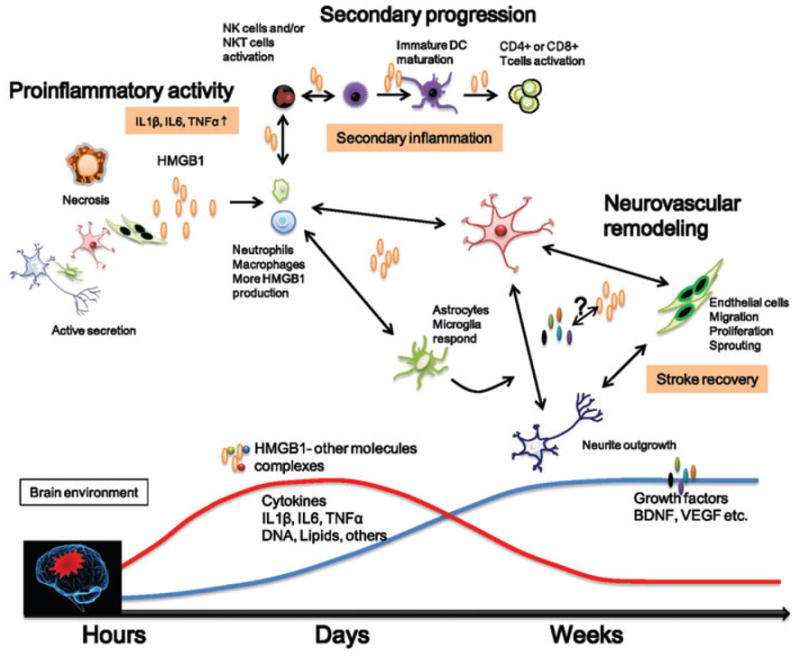Figure 1.

Schematic to summarize the multiphasic roles of HMGB1 after stroke. Acute effects involve cytokine up-regulation and infiltration of neutrophils and macrophages into the brain. HMGB1 can form complexes with other molecules, such as DNA, lipids, and IL-1β. Secondary inflammation may be caused by stimulated T lymphocytes. Delayed actions involve neurovascular remodeling and neurovasculogenesis that may contribute to stroke recovery, as beneficial growth factors such as BDNF and VEGF become elevated. Dissecting the milleu of cytokines, trophic factors, attendant cells, and neurovascular homeostasis may eventually allow us to understand the regulation and transition of detrimental versus beneficial signaling actions of HMGB1 and other inflammatory signals in the brain after stroke.
